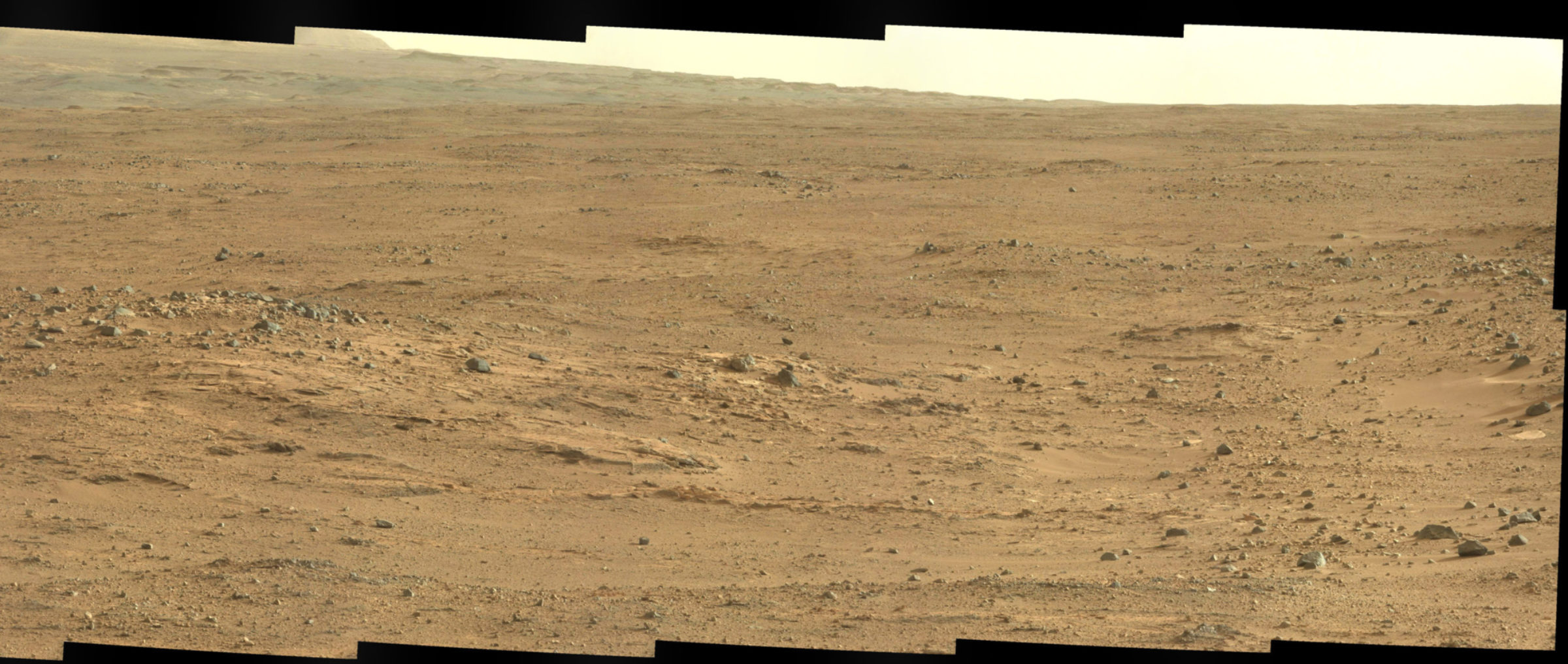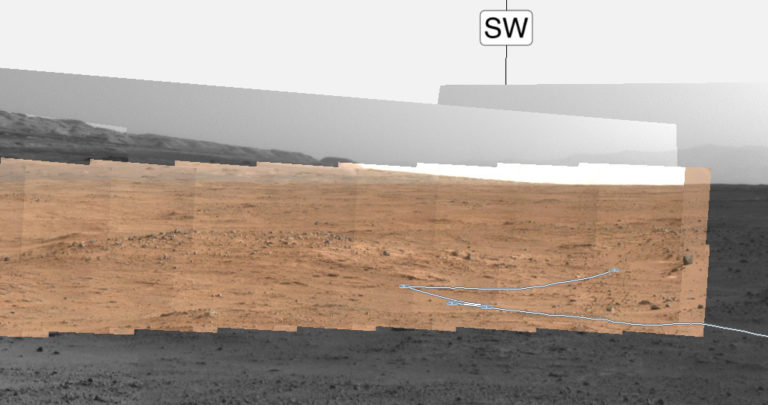Dawn Sumner • Sep 24, 2013
Dawn on Mars: Waypoint 1 Mysteries
Over the last four weeks, I spent more than 100 hours preparing for our science campaign at "Waypoint 1", also called Darwin. (See the official press release for a summary of results.) This is one of a handful of sites that we chose in advance to spend some extra time for contact science on our drive to the base of Mt. Sharp. Along with Ken Williford, I volunteered to coordinate analyses at this first waypoint. There were several key goals for this site.
First, we knew that the rocks would be very interesting and that only a few sols wouldn't get us very far in understanding all the rocks in the area. But we didn't want to get bogged down in a long campaign of analyses, because the base of Mt. Sharp is our prime science target. So Ken and I, with the help of many others, tried to put together a plan that included: identifying good sites for contact science; approaching the site; bumping to our contact science location; and doing three days of "outcrop" science.
Second, we wanted to acquire as much scientific information as possible in our short stay. But different people with different interests would maximize science in different ways. To start the planning off well, I encouraged the science team to identify the key science questions we could address at this site. Many team members stepped forward with presentations on scientific enigmas and the observations we needed to address them. We then settled on analyzing the composition and texture of conglomerates as our top science priority, with analyses of sandstones and mysterious dark rocks as secondary targets.
Third, we decided that a good view is worth a lot. There was a nice three-meter-high, smooth hill with an amazing view of both the basin to the south of the official waypoint and what we hoped would be good areas to consider for contact science.
With these goals in mind, we headed toward the hill, which we named Panorama Point, expecting that it would not cost us any extra sols to get there rather than go straight to the contact science area. As luck would have it, full-fledged AutoNav was approved the day before our drive toward Panorama Point; the terrain was perfect for a long AutoNav drive; and we got to almost the top with a record-breaking drive (141.5 meters!) on sol 385 (September 5). It was also right before a weekend, which meant we would have the weekend at the top of the hill for some stereo panoramic images, opportunistic contact science, and our approach to the contact science area.

On top of all that extra time at a great place (rather than a miscellaneous place), we got to our contact science area several sols earlier than we were planning! This meant that Ken and I and the rest of the team had to move into hyper-planning mode, making decisions a week earlier than we expected.

This acceleration in schedule meant that we also got some extra science at the prime contact science location at no cost to drive progress beyond that already planned. We were in what we call "restricted sols", which means that we only get our data down from Curiosity after we have to make a plan for the next day. This really slows us down when we are driving, because we can only drive every other sol. However, when we are doing contact science in one spot and not moving the rover, we can do useful analyses every sol. So I really wanted to get to the contact science area during restricted sols, which we did. That means that we could bump to one site and do some analyses while waiting for the data we needed to get to the second site (which had better outcrop in my opinion). We ended up with more contact science, and two sites at the cost of no drive sols (or maybe one drive sol, depending on how you count). This was a huge accomplishment for the team. We took a record number of MAHLI images and did eight analyses with APXS. And we left the site on schedule with no problems. And we ended just as restricted sols ended. Thus, we are back to Drive, Drive, Drive every day!

To see our data, check out the images at http://mars.jpl.nasa.gov/msl/multimedia/raw/?s=#/?slide=385 starting with sol 385 for tons of AutoNav drive images and going up to sol 402 with our last HazCam picture of the outcrop at site 2. Spend some time with hundredss of images! And remember - they are from Mars!
Editor's note: I also highly recommend the Midnight Mars Browser website for browsing Curiosity's photos! Start there at sol 385.
Support our core enterprises
Your support powers our mission to explore worlds, find life, and defend Earth. You make all the difference when you make a gift. Give today!
Donate

 Explore Worlds
Explore Worlds Find Life
Find Life Defend Earth
Defend Earth

